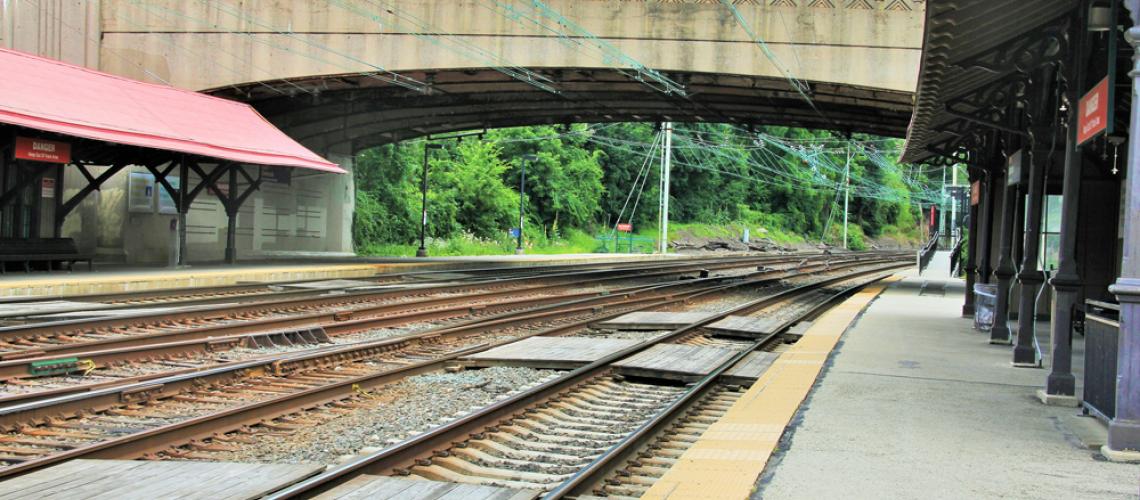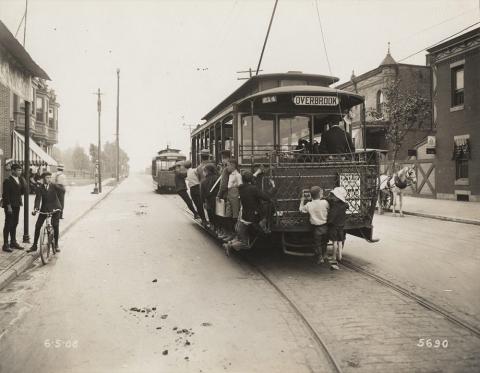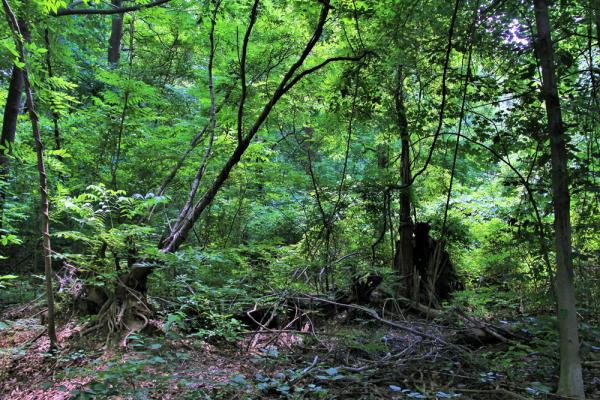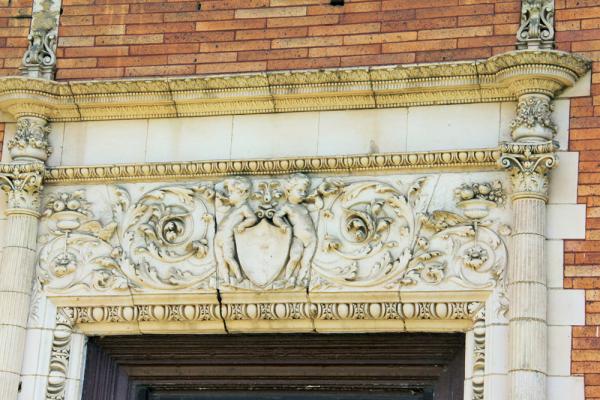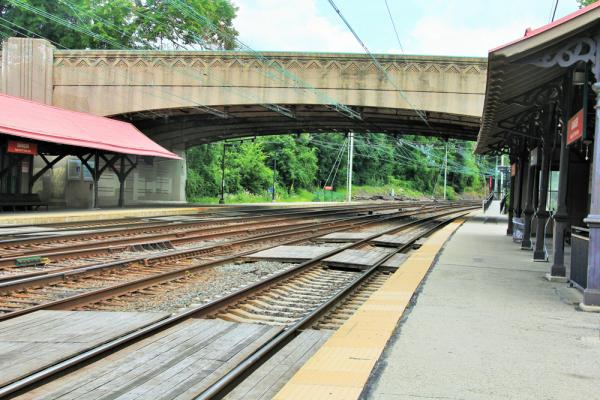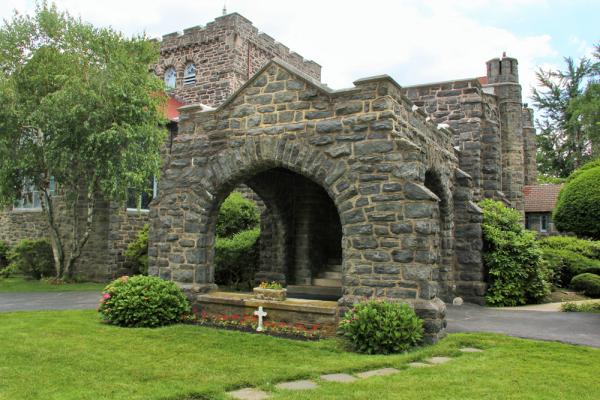Railroads and Trolleys in Overbrook
Part of
From the mid-19th century onward, the Pennsylvania Railroad’s “Main Line” trains spurred the development of affluent suburbs just northwest of the City of Philadelphia. Overbrook’s residential development benefited immensely from the railroad’s passage through West Philadelphia to the central city. Electric trolleys arrived in Overbrook in 1895.
From the mid-19th century onward, the “Main Line” trains of the Pennsylvania Railroad (PRR) spurred the creation of affluent suburbs to the City of Philadelphia’s immediate northwest. Located at the City Line near 63rd Street, Overbrook Station was the catalyst for the residential development of that neighborhood. Electric trolleys arrived in Overbrook in 1895.
Pennsylvania Railroad
The Philadelphia & Columbia Railway, popularly known as the Paoli Local, laid its tracks across Blockley Township in the 1830s, paralleling and crossing the Lancaster Pike en route to Montgomery County. Established in 1846, the Pennsylvania Railroad acquired the Columbia in 1850, providing cross-state railway service to Pittsburgh and claiming to serve 146,320 passengers in 1852. The Overbrook historian Tello J. d’Apéry gives the following description of one traveler’s roughhewed impression of the Pennsylvania Railroad in mid-19th century West Philadelphia:
“In describing the journey to Pittsburgh in 1852, a writer refers to the first mile of the journey being made over the widest street in Philadelphia [starting from the train station at 18th and Market streets, constructed in 1847], and after dwelling on the virtues of the Market Street Bridge, which had been widened to accommodate the railway cars in 1850, remarks: “Emerging from the bridge we enter the borough of West Philadelphia, with its mud and dust and gimcrack [shoddy] cottages. It has a large and rapidly increasing population, which is principally composed of those who conduct business in the city, but do their sleeping out here—hence the dull, drowsy appearance of the place.”[1]
The “Main Line”[2] trains of the Pennsylvania Railroad (PRR) were horsecars that carried passengers on the City Railroad line from the PRR’s then-main station at 18th and Market streets to a station at 30th Street in West Philadelphia, where the PRR replaced horses with locomotive engines. The three stations of the PRR beyond 30th Street were designated “flag stations,” where trains stopped only if a flag was raised for passengers boarding and/or departing. The stations, opened ca. 1860, were in Mantua, near 40th Street; Hestonville, at 52nd Street; and Overbrook, at City Line Avenue near 63rd Street. In 1874, a monthly pass from Philadelphia to Overbrook Station cost $3.25.[3]
The PRR competed with the Reading Railroad in eastern Pennsylvania, as both lines served a middle-class clientele. Each railroad maintained a passenger terminal in the central city. “By the 1880s,” as the historian Albert J. Churella writes, “Philadelphia’s commercial center and its passenger terminals moved closer to each other, as the two embodiments of middle-class public space—railway stations and department stores assumed grandiose proportions.” By the 1880s the city’s commercial center had shifted west from the Delaware River. The markers of this shift were John Wanamaker’s “Grand Depot” department store (opened 1876) at 13th and Market streets; the spectacular Second Empire-style City Hall (est. 1881) at the intersection of Broad and Market streets; the PRR’s new Broad Street Station (opened 1881) at the corner of 15th and Filbert streets, opposite City Hall; and the Reading Terminal (1893) at 12th and Filbert streets, on the opposite side of City Hall from the Broad Street Station.[4]
George Brooke Roberts, the fifth president of the Pennsylvania Railroad (1880–97), oversaw construction of the Broad Street Station. Wilson Brothers, a famed Philadelphia architectural firm, built the Victorian Gothic edifice, “an imposing pile of brick and granite, with a 176-foot-high clock tower that was nevertheless overshadowed by the nearby statue of William Penn atop City Hall.”[5] The imposing headhouse fronted two train sheds that pointed toward the Schuylkill River. According to Churella:
“From the west, passenger trains crossed the Schuylkill River over a temporary replacement for the 1805-vintage Market Street Permanent Bridge, which had succumbed to fire in 1875. They avoided city streets by entering the Broad Street Station on an iron elevated line that gave way to a stone viaduct as the tracks approached the station. The combined structure, more than two-thousand feet in length, was properly known as the Filbert Street Extension, but locals eventually referred to it as the ‘Chinese Wall.’”[6]
Trolleys
An electric trolley line, called the Arch Street Line, was extended to Overbrook in 1895. The trolleys followed the path of 63rd Street to Lansdowne Avenue, to Lancaster Avenue, to Haverford Avenue, and so on down to the central city.[7]
